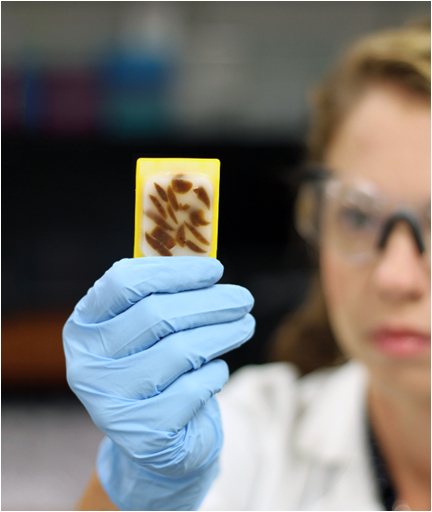“I would do more with my samples, but it’s just not possible…I know there’s probably a wealth of information in there, but there is just no way to get it out…I’ve got blocks of tissue sitting in the lab, experiments I want to run, but no good way to get clean nucleic acids out.”
These are a few of the comments I heard when talking with scientists at the American Society of Human Genetics meeting last week in Montreal. They, and countless other researchers, are sitting on a treasure trove of information that may have been locked away a few months ago, a few years ago, or decades ago. I’m referring to formalin-fixed, paraffin-embedded (FFPE) tissue blocks. It is estimated that there are upwards of 400 million tissue blocks archived globally and scientists are clamoring to find ways to best utilize nucleic acids derived from these tissues in applications like qPCR, microarrays, and next generation sequencing.1
 The process of fixing a tissue sample in formalin and then embedding in paraffin wax can cause significant damage to the nucleic acids, resulting in a high degree of fragmentation and cross-linkage to other molecules such as proteins. The length of time the sample was stored in formalin as well as the age of the sample and the storage conditions have tremendous impact on the quality of the nucleic acids inside. The scientist tasked with extracting nucleic acids from these tissues and performing, in some cases, very sensitive downstream applications probably had no part of the fixation and storage process and may not know how the samples had been treated in the past. These obstacles, coupled with the finite amount of sample a scientist may have available makes the nucleic acid trapped inside the tissue immensely precious.
The process of fixing a tissue sample in formalin and then embedding in paraffin wax can cause significant damage to the nucleic acids, resulting in a high degree of fragmentation and cross-linkage to other molecules such as proteins. The length of time the sample was stored in formalin as well as the age of the sample and the storage conditions have tremendous impact on the quality of the nucleic acids inside. The scientist tasked with extracting nucleic acids from these tissues and performing, in some cases, very sensitive downstream applications probably had no part of the fixation and storage process and may not know how the samples had been treated in the past. These obstacles, coupled with the finite amount of sample a scientist may have available makes the nucleic acid trapped inside the tissue immensely precious.
Historically, methods for purifying nucleic acids from FFPE tissues involved deparaffinization in harsh organic solvents, long overnight incubations, and, at best, a small amount of nucleic acid that may or may not be suitable for downstream applications. In my discussions with countless scientists on the issue, they have used these techniques because there simply was no other way.
There is hope out there, I reassured the ASHG-goers and now I reassure you. There are kits commercially available to help streamline the purification process and give you a better chance of purifying quality nucleic acids from these precious, archival tissues. Some features to look for that will not only speed up the purification process but also result in purification of more intact, quality nucleic acids are:
- No harsh organic solvents (i.e. xylene)
- Buffers or lysis conditions optimized to remove or reverse modifications introduced by the fixation process
- Appropriate nuclease treatment (either DNase or RNase, depending on the sample you want to isolate) to ensure minimal unwanted nucleic acid carryover
Armed with a good purification kit, you can look past the barriers to research involved with FFPE tissue and fixate, instead, on the research possibilities.
- Liszweski, K. (2008) Applying aCGH to Molecular Diagnostics Emerging Technology Has Promise for Analyzing Copy Number Variation. Genetic Engineering & Biotechnology News. 28:10.
admin
Latest posts by admin (see all)
- Safety First (and Sensitivity too!): Diamond™ Nucleic Acid Dye - August 7, 2013
- The Price for Convenience May Not Be That Pricey After All - April 12, 2013
- A New Edge in Bisulfite Conversion - February 20, 2013
